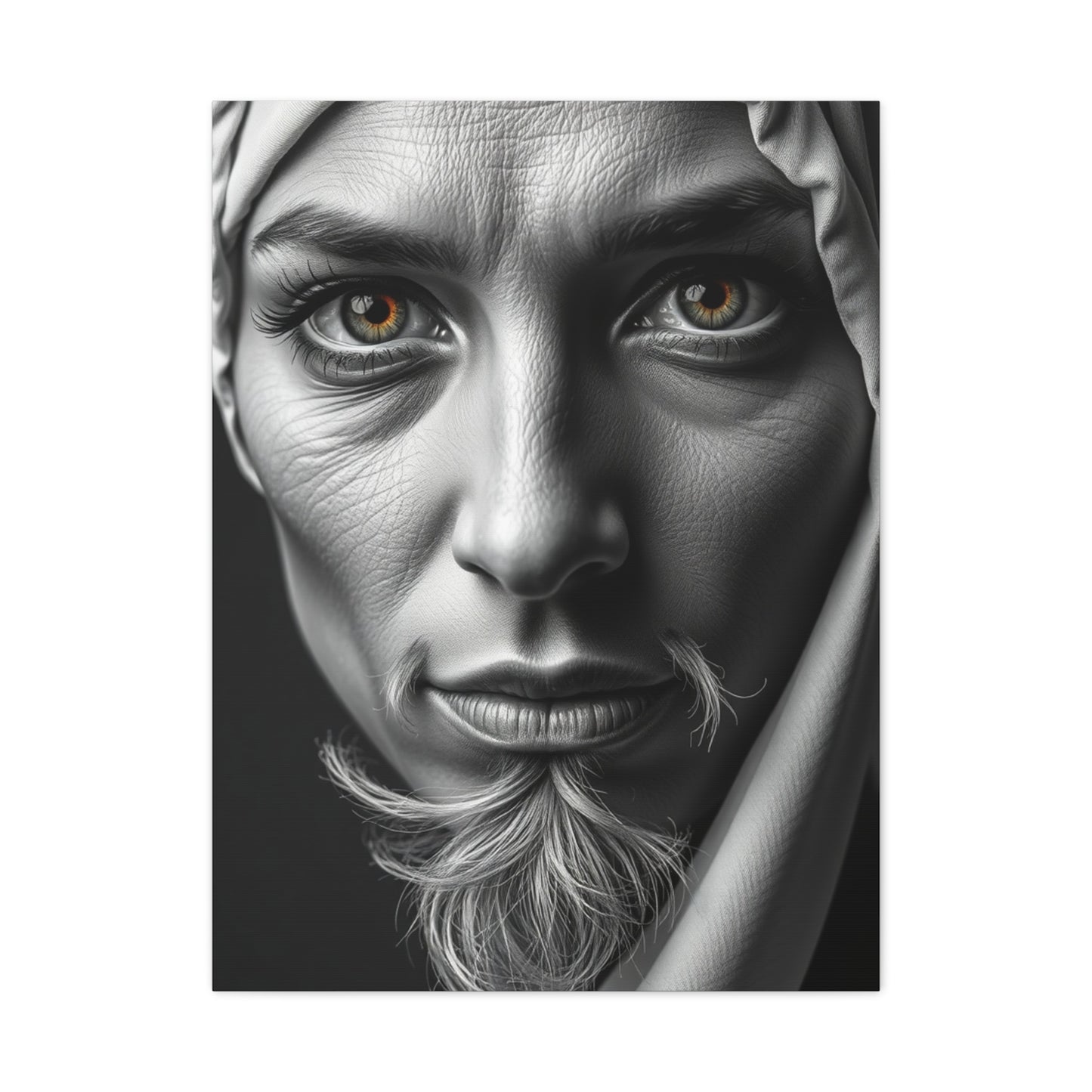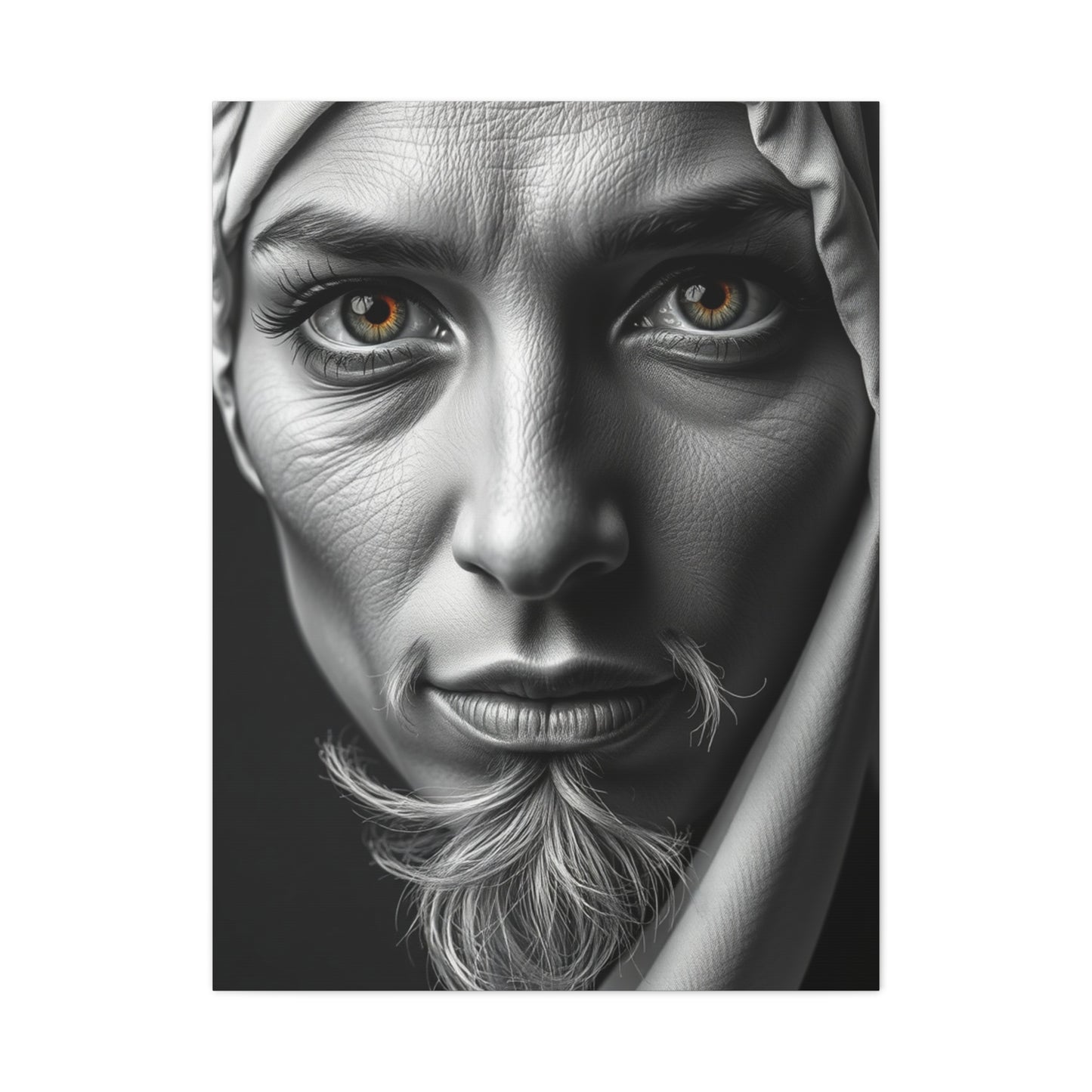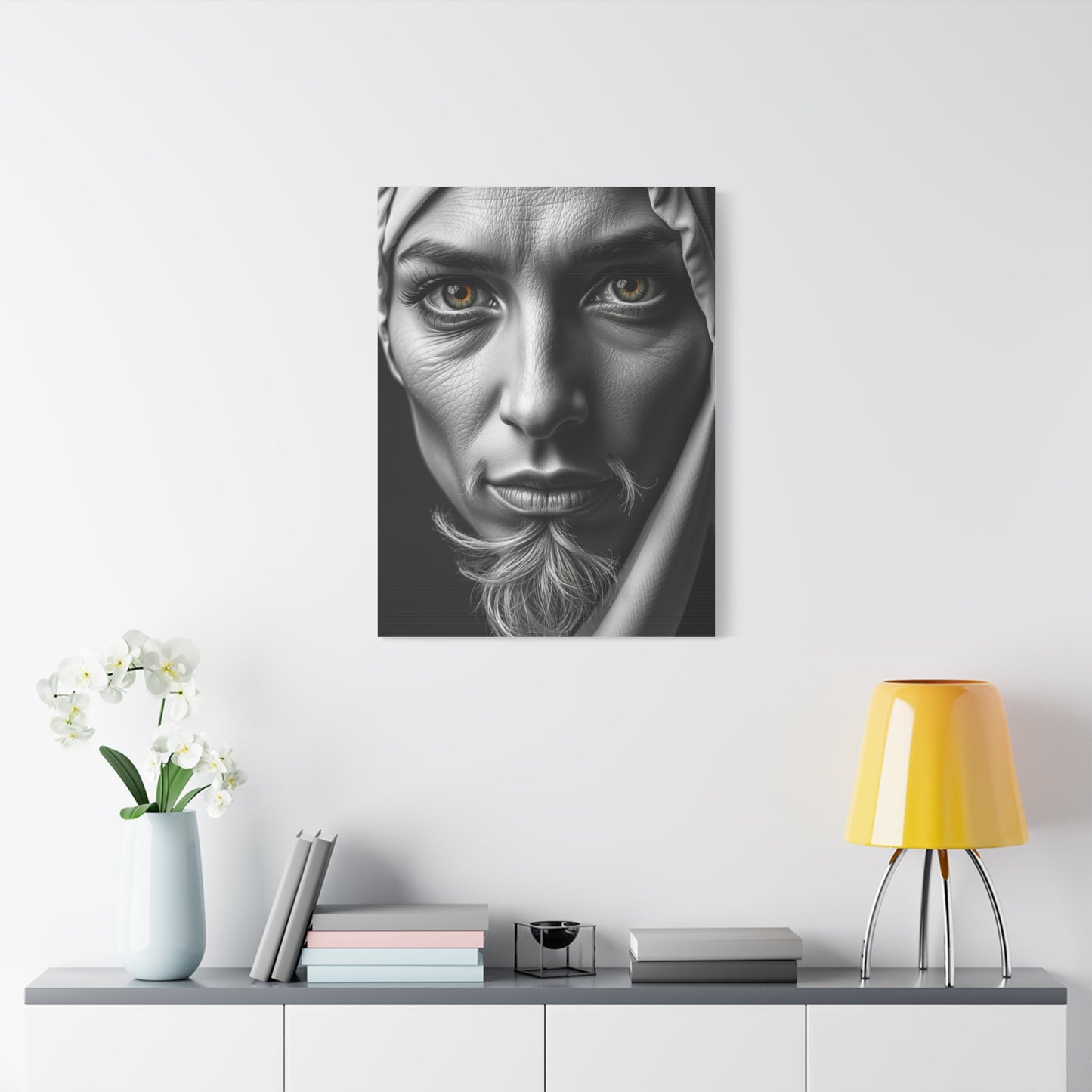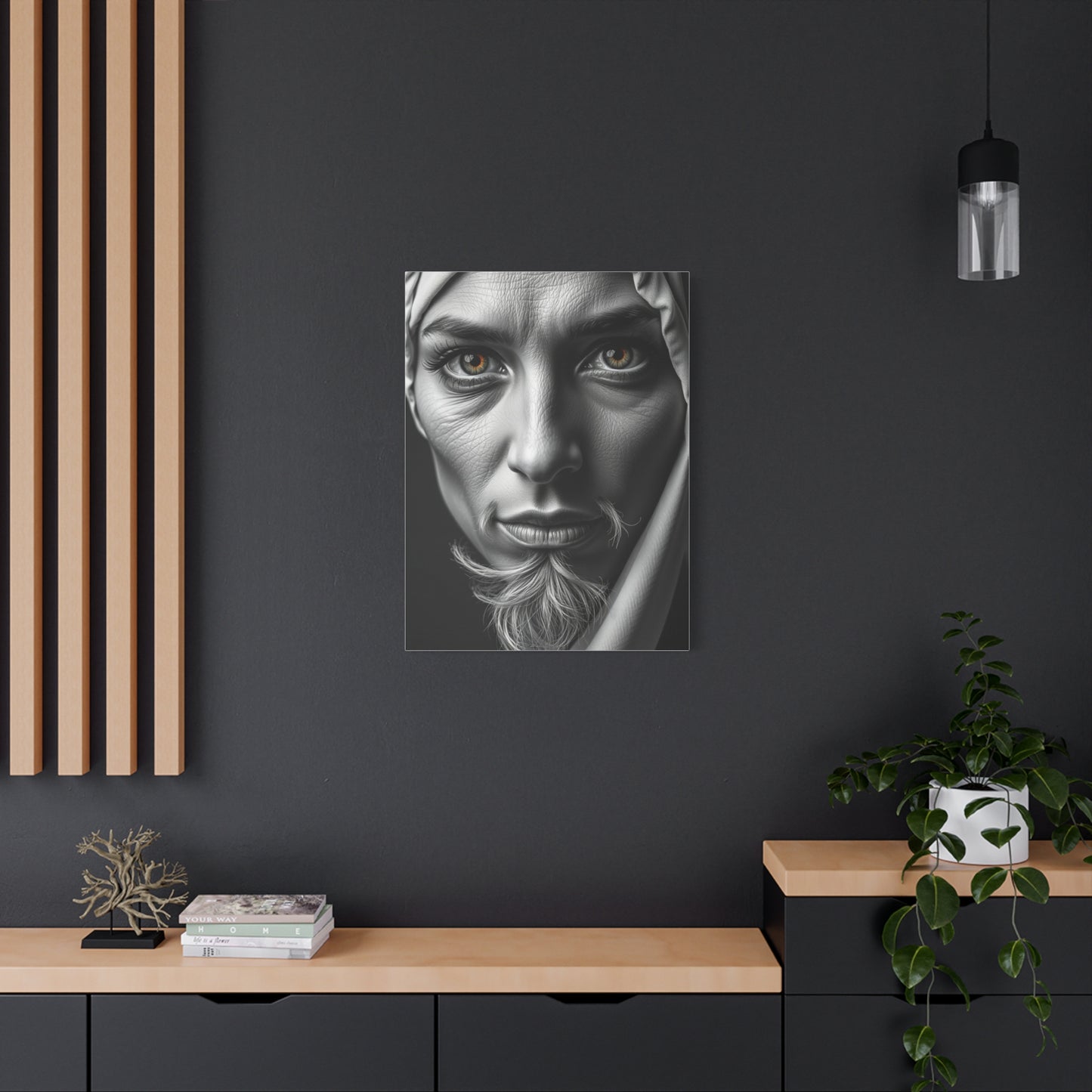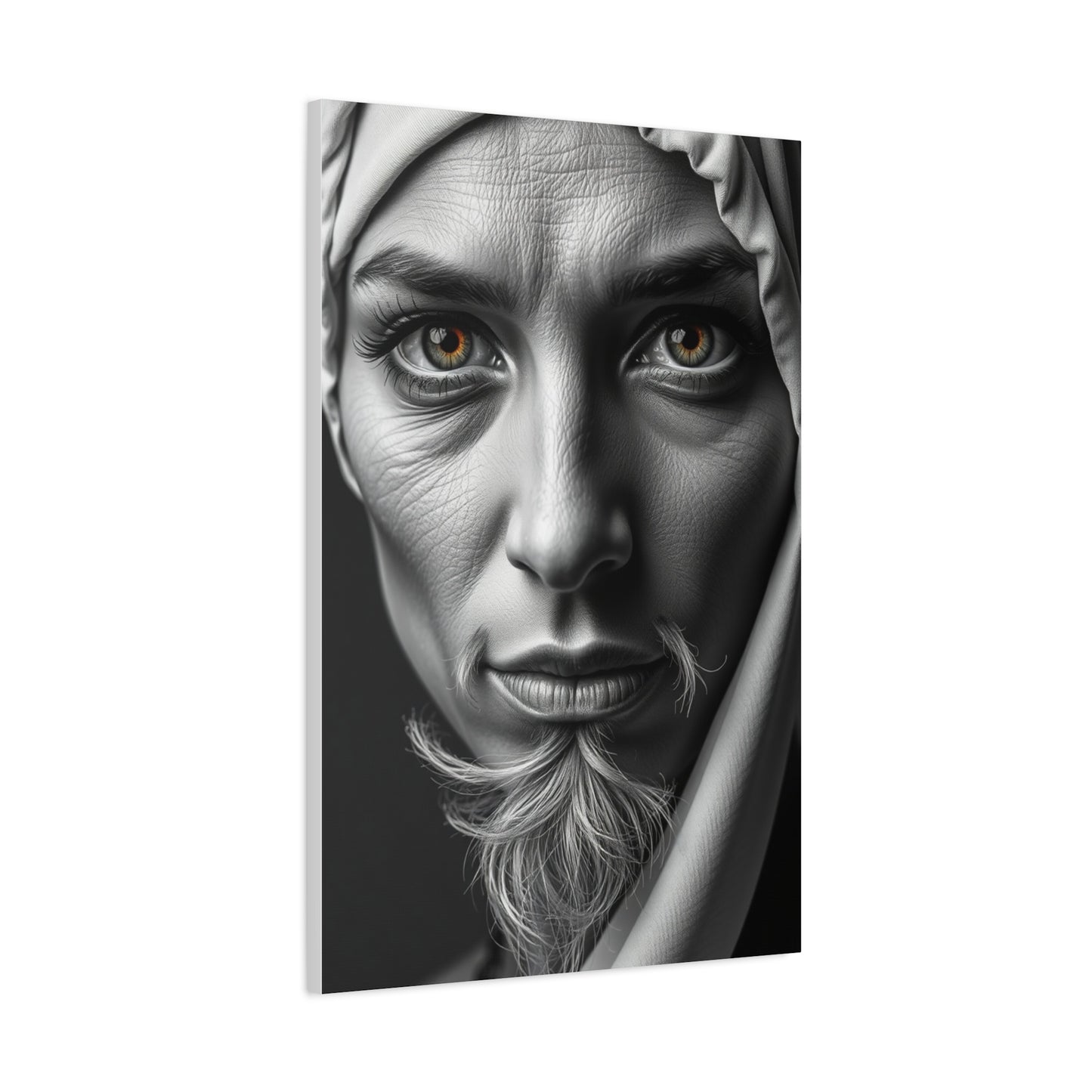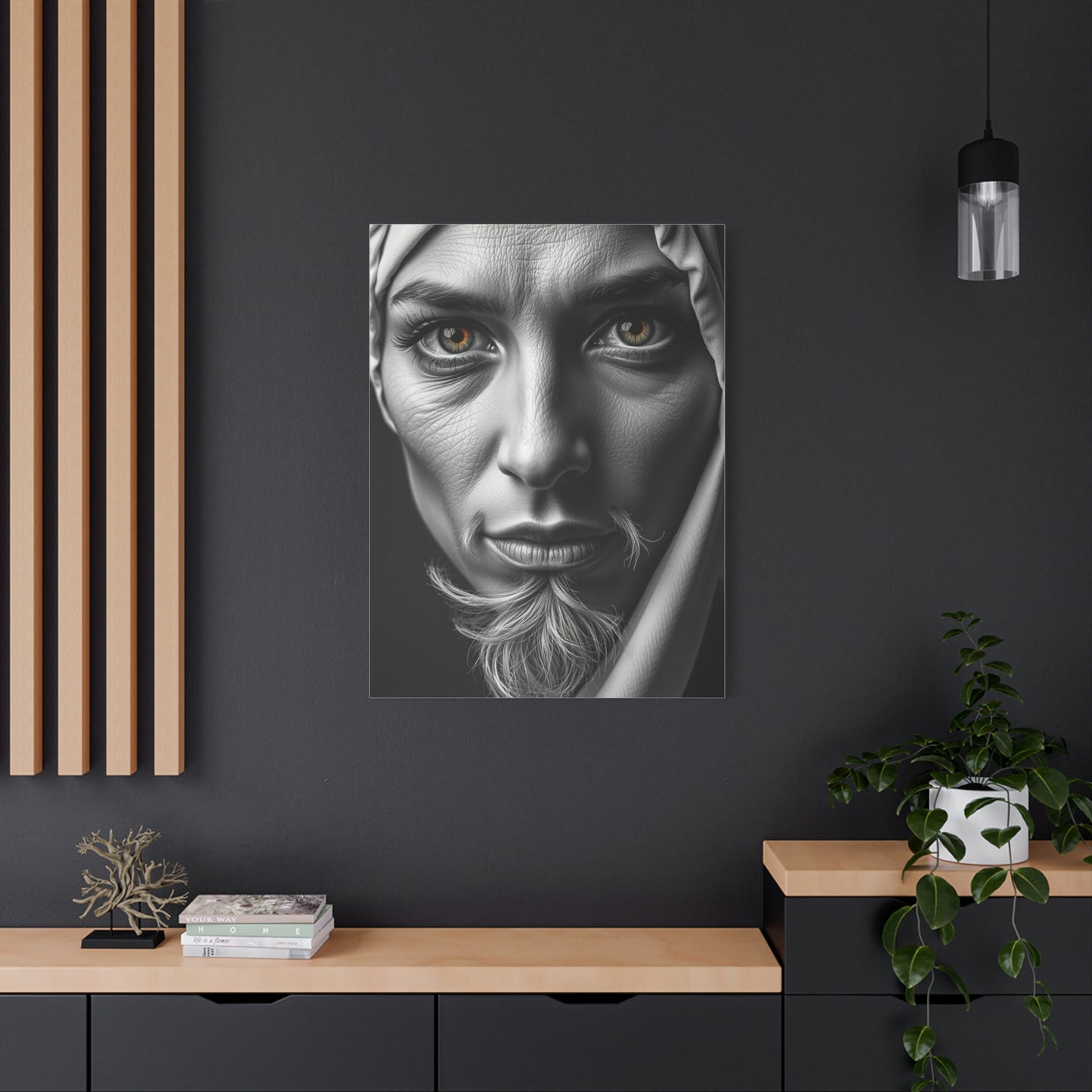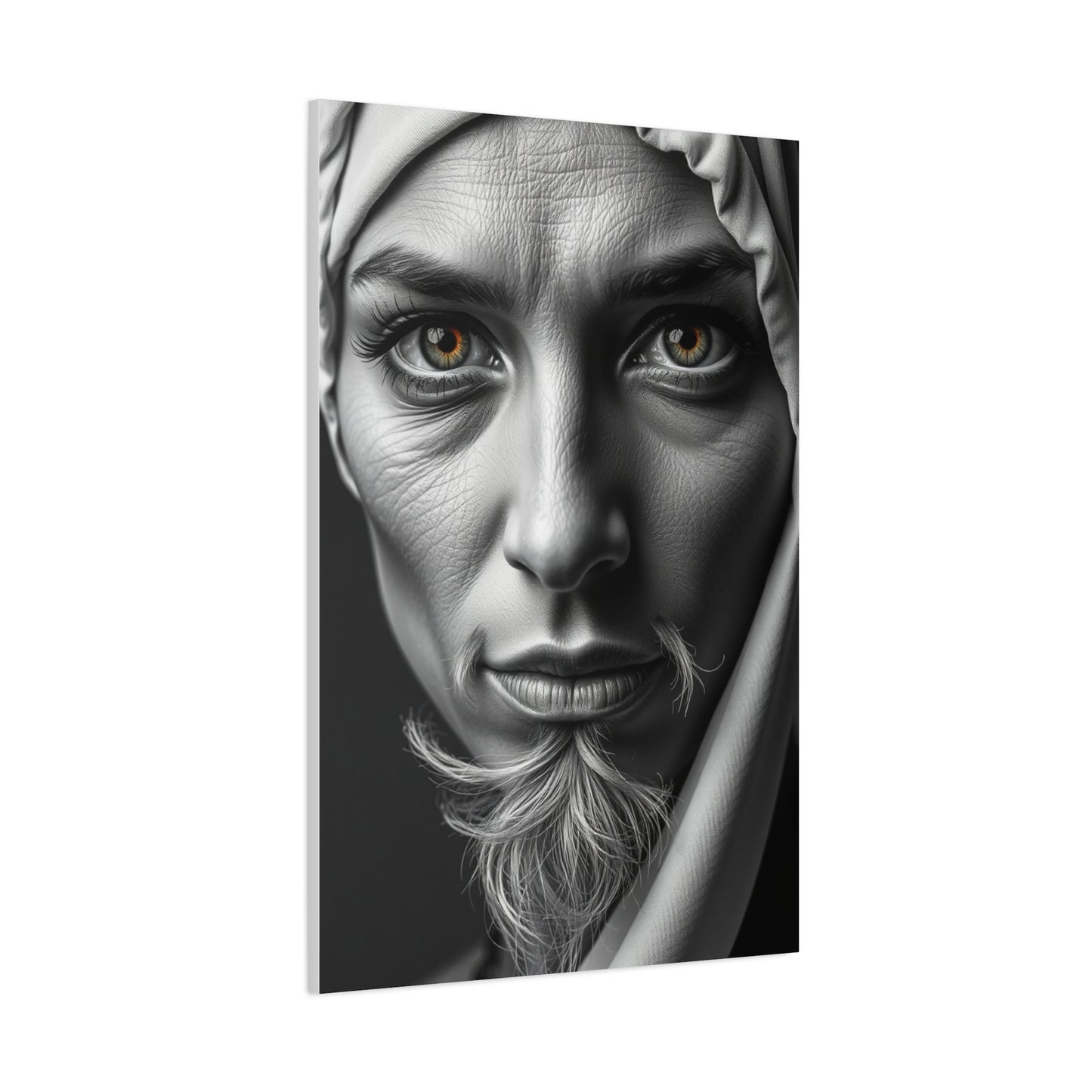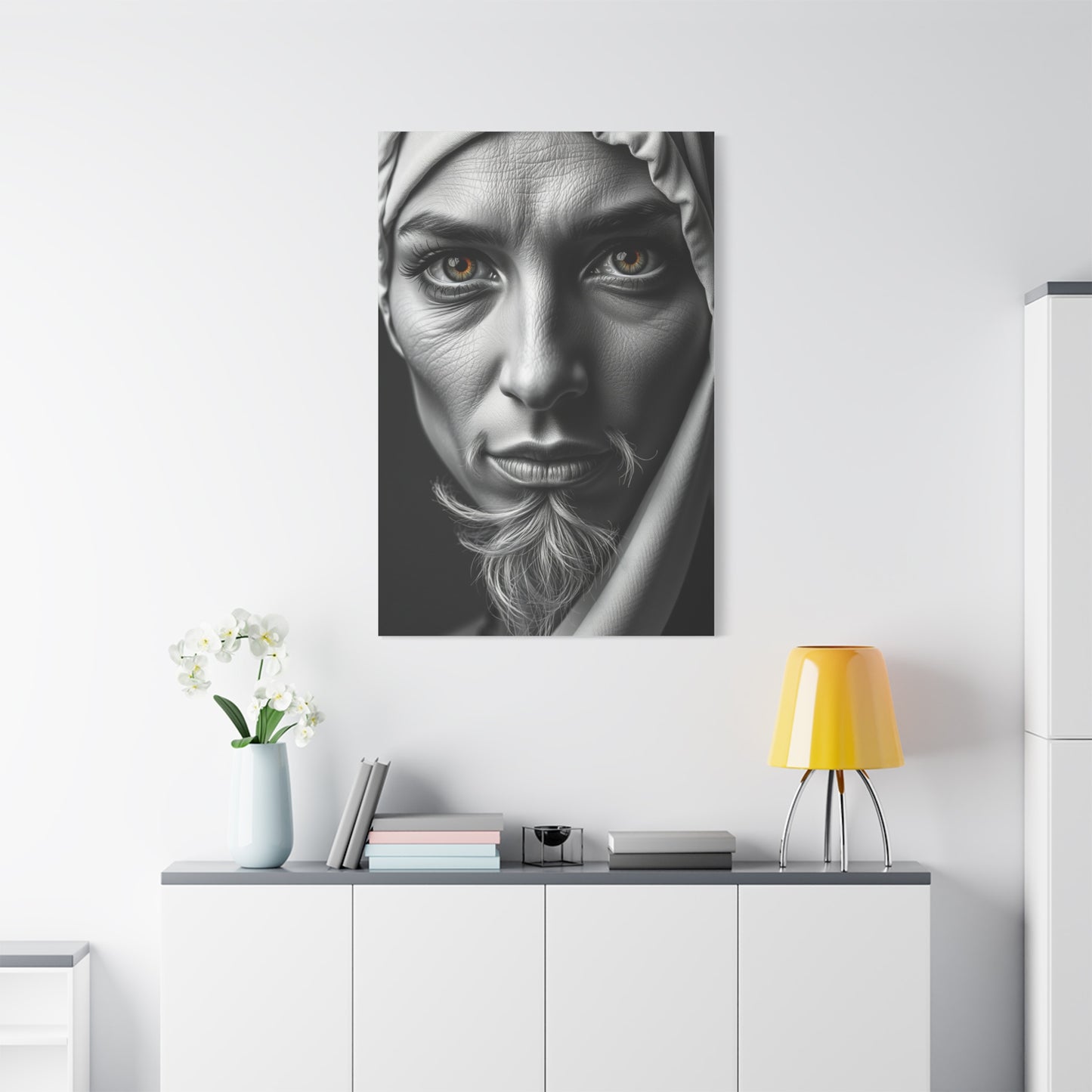Chic Dichotomy Canvas Wall Art: A Visual Representation of Modern Tension and Contrast
The world of interior design has witnessed a remarkable evolution in recent years, with homeowners and decorators increasingly gravitating toward artistic expressions that embody contrast, balance, and visual sophistication. Among the most captivating trends emerging in contemporary decor is the embrace of dual-tone artwork that celebrates the interplay between opposing elements. This aesthetic philosophy transcends mere color choices, delving into deeper themes of harmony, tension, and the beautiful coexistence of contrasting forces within our living environments.
The appeal of contrast-driven artwork lies in its versatility and timeless elegance. Whether adorning the walls of a minimalist apartment, a corporate headquarters, or a sprawling family residence, these pieces command attention while maintaining an air of refined subtlety. They speak to our innate appreciation for visual balance and our psychological attraction to patterns that simultaneously soothe and stimulate the mind.
In today's design landscape, where personalization and meaningful aesthetic choices reign supreme, the selection of wall decor becomes an extension of one's identity and values. The rise of monochromatic and contrasting artwork reflects a broader cultural shift toward intentionality in our surroundings. People are no longer content with generic decorative pieces; they seek artwork that resonates with their sensibilities, tells a story, and transforms their spaces into curated environments that inspire daily life.
Sophisticated Style Through Contrasting Visual Elements in Wall Decor
The concept of using contrasting visual elements in wall decor represents far more than a passing trend; it embodies a fundamental design principle that has captivated artists and designers throughout history. When we speak of dichotomy in visual art, we refer to the intentional pairing of opposing elements that create tension, interest, and ultimately, harmony within a composition. This approach to wall art has gained tremendous momentum in contemporary interior design, largely because it addresses multiple aesthetic needs simultaneously while remaining remarkably adaptable to various design philosophies.
At its core, the appeal of contrasting artwork stems from the human brain's natural tendency to seek patterns and make sense of opposing forces. When we encounter a piece that skillfully balances light against dark, geometric precision against organic flow, or minimalism against complexity, our minds engage in a subtle dance of interpretation. This cognitive engagement transforms passive viewing into an active experience, making such artwork particularly valuable in spaces where we spend significant time. The intellectual stimulation provided by these pieces prevents visual fatigue, as there are always new details to discover and relationships to contemplate.
The sophistication inherent in contrast-driven wall art manifests through various dimensions. Color contrast stands as the most immediately recognizable form, with the stark interplay between opposing hues creating instant visual impact. However, equally powerful are contrasts in texture, form, scale, and conceptual meaning. A truly exceptional piece might layer multiple forms of contrast, creating a rich visual experience that rewards repeated viewing. Consider artwork that pairs smooth, flowing curves with sharp, angular lines, or pieces that juxtapose densely detailed sections against expansive areas of negative space. These multilayered contrasts create depth and sophistication that elevate a room's entire aesthetic.
From a practical standpoint, contrast-heavy artwork serves as an invaluable tool for interior designers and homeowners alike. In spaces dominated by neutral tones, such pieces provide visual anchors that prevent the environment from feeling sterile or lifeless. Conversely, in more colorfully decorated rooms, contrasting artwork can introduce a calming element that grounds the space and provides visual respite. The versatility of this approach means that the same fundamental aesthetic can be adapted to suit minimalist lofts, traditional homes, eclectic studios, and corporate environments with equal effectiveness.
Contemporary Monochrome Canvas Artwork for Modern Interiors
The enduring appeal of monochrome canvas artwork in contemporary interiors speaks to a fundamental appreciation for visual purity and the power of restraint. In an age characterized by sensory overload and constant visual stimulation, the deliberate choice to limit a palette to opposing tones represents a conscious decision toward clarity, focus, and intentionality. This approach to wall art has become particularly prominent in modern design circles, where the emphasis on clean lines, uncluttered spaces, and meaningful aesthetic choices aligns perfectly with the qualities inherent in monochromatic compositions.
Monochrome artwork encompasses far more than simple absence of color. It represents a sophisticated artistic choice that emphasizes form, composition, texture, and the subtle gradations between extremes. When executed skillfully, a piece limited to two tones can convey as much emotion, tell as complex a story, and create as powerful an impact as any multicolored composition. The restriction of palette forces both artist and viewer to focus on other elements of visual communication, resulting in pieces that often possess a timeless quality that transcends fleeting color trends.
In modern interiors, where design philosophies often emphasize reduction to essentials, monochrome canvas prints serve as perfect artistic companions. They complement minimalist aesthetics without disappearing into backgrounds, provide visual interest without overwhelming spaces, and introduce artistic sophistication without demanding dramatic design commitments. This versatility makes them particularly valuable for those who appreciate flexibility in their decor, as these pieces transition seamlessly through various design phases and complement evolving furniture and accessory choices.
The technical execution of contemporary monochrome canvas artwork has evolved considerably with advances in printing technology and artistic techniques. Modern pieces often feature remarkable depth and dimensionality despite their limited palette. Through strategic use of shading, gradient effects, and textural variations, artists create compositions that reveal new details upon repeated viewing. Some pieces employ glossy and matte finishes within the same composition, creating subtle contrasts that shift appearance based on viewing angle and lighting conditions. Others incorporate slight texture variations in the canvas itself, adding tactile interest that elevates the work beyond simple two-dimensional imagery.
Simplified Aesthetic Through Dual-Tone Wall Decoration
The movement toward simplified aesthetics in interior design has revolutionized how we approach wall decoration, with dual-tone compositions emerging as champions of this philosophy. Minimalist wall decor built on contrasting principles strips away extraneous elements to reveal the essential visual truths of form, space, and relationship. This approach resonates deeply with contemporary sensibilities that value clarity, intentionality, and the power of restraint in creating environments that nurture rather than overwhelm the human spirit.
At the heart of minimalist dichotomy wall decor lies a profound understanding that visual impact need not correlate with complexity. A composition featuring only two tones can communicate volumes through the strategic arrangement of those elements, the relationships they create, and the negative space they define. This realization liberates both artists and decorators from the assumption that more elements, colors, or details necessarily create more compelling artwork. Instead, it reveals how restriction can amplify impact, forcing every element to carry weight and meaning.
The principles guiding minimalist dual-tone wall decoration draw heavily from ancient artistic traditions that recognized the power of simplicity. Eastern philosophies of aesthetics, particularly those expressed in Japanese wabi-sabi and ma concepts, celebrate the beauty of emptiness, the eloquence of understatement, and the wisdom of knowing when to refrain from addition. Contemporary minimalist artwork channels these timeless principles through modern visual languages, creating pieces that feel simultaneously ancient and cutting-edge, familiar and revolutionary.
In practical application, minimalist dichotomy wall decor serves multiple functions within contemporary living spaces. Primarily, these pieces create focal points that organize visual attention without demanding it. Unlike busy, complex artwork that constantly calls for notice, minimalist compositions possess a quieter presence that reveals itself gradually. This quality makes them ideal for spaces where calm and focus are priorities, from meditation rooms to executive offices to bedrooms designed as personal sanctuaries.
The design process for selecting minimalist dual-tone wall decoration requires a different mindset than choosing more elaborate pieces. Rather than seeking artwork that fills space or provides constant visual stimulation, one looks for compositions that enhance the space through their restraint. The question shifts from "What does this piece add?" to "How does this piece interact with the existing environment?" This perspective transforms wall art selection from an additive process to a curatorial one, where each element must justify its presence through its contribution to the overall spatial harmony.
Material considerations take on heightened importance in minimalist dual-tone wall decoration. The texture of the canvas, the quality of the print, and the craftsmanship of the frame all become more visible when the composition itself embraces simplicity. There are fewer elements to distract from these material qualities, meaning that any shortcomings become more apparent. Conversely, when executed with attention to material excellence, minimalist pieces possess a quiet luxury that speaks volumes about the owner's discernment and appreciation for quality.
Sophisticated Opposition in Contemporary Interior Artwork
The concept of sophisticated opposition in contemporary interior artwork elevates the basic principle of contrast into a refined design language that speaks to discerning aesthetic sensibilities. This approach recognizes that true elegance emerges not from homogeneity but from the thoughtful reconciliation of opposing forces. In the context of wall art, sophisticated opposition manifests through carefully calibrated relationships between contrasting elements that challenge, complement, and ultimately enhance one another.
Contemporary interiors increasingly demand artwork that functions as more than passive decoration. Sophisticated opposition pieces actively engage with their environments, creating dynamic visual relationships that evolve as one moves through and lives within the space. These works possess an intellectual dimension that rewards contemplation while remaining accessible enough to enhance daily life rather than demanding constant focused attention. This balance between depth and approachability defines the essence of sophisticated contemporary artwork.
The development of sophisticated opposition aesthetics in interior artwork draws from diverse influences ranging from modernist art movements to architectural theory to philosophical concepts of duality and balance. Artists working in this mode often cite influences as varied as constructivism, abstract expressionism, and traditional Asian ink painting. This eclectic foundation results in artwork that transcends easy categorization, appealing to viewers across different cultural backgrounds and aesthetic preferences.
In execution, sophisticated opposition artwork employs various strategies to create compelling visual experiences. Some pieces achieve sophistication through compositional complexity, arranging contrasting elements in intricate relationships that reveal themselves gradually. Others pursue refinement through extreme simplicity, allowing two opposing forces to interact with nothing to mediate or soften their encounter. Both approaches can achieve sophisticated results when guided by strong artistic vision and technical mastery.
The role of negative space in sophisticated opposition artwork cannot be overstated. Rather than viewing empty areas as voids to be filled, accomplished artists recognize negative space as an active participant in the composition. In contrasting artwork, the spaces between or around opposing elements often carry as much meaning and visual weight as the elements themselves. This sophisticated use of emptiness reflects maturity in both artistic vision and viewer appreciation, moving beyond the novice tendency to equate visual interest with density of information.
Non-Representational Contrast in Canvas Design Compositions
Non-representational contrast in canvas design represents perhaps the purest expression of dichotomy principles in wall art. By eschewing recognizable imagery and focusing exclusively on abstract relationships between opposing visual elements, these compositions tap into primal aesthetic responses that transcend cultural conditioning and personal experience. Abstract contrast artwork communicates through the universal language of form, space, and visual tension, making it accessible to diverse audiences while retaining capacity for deeply personal interpretation.
The power of abstract dichotomy canvas designs lies in their ability to bypass the interpretive filters we apply to representational imagery. When viewing abstract compositions, viewers engage directly with fundamental visual relationships without the mediation of symbolic or narrative content. This direct engagement can create profound aesthetic experiences, as the brain responds to patterns, contrasts, and rhythms at a preconscious level before analytical interpretation begins. The resulting connection between viewer and artwork operates on intuitive rather than intellectual dimensions.
Contemporary abstract contrast designs employ various formal strategies to create compelling visual experiences. Some compositions embrace geometric precision, using sharply defined shapes and clean lines to create stark juxtapositions. Others pursue organic abstraction, with flowing forms and soft edges suggesting natural forces and biological processes. Many of the most successful pieces blend these approaches, creating tensions not just between light and dark tones but between geometric and organic, controlled and spontaneous, planned and accidental.
The compositional principles governing successful abstract dichotomy designs draw from fundamental laws of visual perception. Balance, rhythm, proportion, and unity all play crucial roles in determining whether a composition succeeds or fails. However, abstract work allows for more experimental approaches to these principles than representational imagery typically permits. An abstract piece might deliberately create imbalance to generate visual tension, or violate traditional proportion rules to emphasize the arbitrary nature of such conventions. This freedom makes abstract dichotomy work particularly exciting for adventurous collectors.
Color relationships in abstract contrast designs gain heightened importance due to the absence of representational content. When removed from the context of depicting recognizable objects, contrasting tones become pure emotional and psychological forces. The interaction between opposing values can evoke responses ranging from peaceful harmony to dynamic tension, from contemplative calm to energizing vitality. Understanding these emotional dimensions allows for strategic selection of abstract pieces based on the atmospheric qualities desired in specific spaces.
Refined Dual-Color Tone Artwork for Wall Display
The emergence of refined dual-color tone artwork represents a sophisticated evolution in contemporary wall display options, offering aesthetic solutions that bridge minimalist restraint and visual richness. These compositions demonstrate that limitation of palette to two opposing tones need not result in spare or austere presentations. Instead, through masterful manipulation of those limited elements, artists create works of remarkable depth, nuance, and emotional resonance that elevate any interior they inhabit.
Refined dual-tone artwork distinguishes itself through attention to subtle gradations, complex compositions, and layered meanings that reveal themselves over time. Where simpler dual-tone pieces might present straightforward contrasts, refined examples explore the entire spectrum between their opposing tones, creating rich visual experiences within their constrained palettes. These works often feature sophisticated uses of gradient effects, where tones transition seamlessly across the composition, creating atmospheric depth and dimensional illusion.
The artistic sophistication evident in high-quality dual-tone wall art manifests through various technical achievements. Precision in tonal control ensures that relationships between lighter and darker areas create intentional effects rather than arbitrary patterns. Compositional balance distributes visual weight thoughtfully across the picture plane, creating stability even when depicting dynamic or tension-filled subjects. Edge quality in areas where tones meet demonstrates the care taken in execution, with deliberate choices about whether transitions should be sharp and crisp or soft and graduated.
Contemporary applications of refined dual-tone artwork span diverse aesthetic contexts from residential to commercial, from intimate to expansive spaces. In residential settings, these pieces bring gallery-quality aesthetics to everyday living environments, elevating the perceived sophistication and cultural capital of the home. Corporate and hospitality environments benefit from the professional yet approachable character of refined dual-tone pieces, which convey taste and investment in quality without the potential divisiveness of more subjective artistic choices.
The selection process for refined dual-tone wall artwork requires discerning evaluation of multiple quality factors. Beyond immediate visual appeal, consideration must include the depth of the composition, the skill evident in tonal manipulation, the originality of the visual approach, and the quality of materials and production. A truly refined piece will maintain interest over years of daily viewing, revealing new subtleties and inviting fresh interpretations as one's own perspectives evolve. This longevity of appeal distinguishes investment-worthy artwork from temporary decorative solutions.
Installation and presentation considerations significantly impact the effectiveness of refined dual-tone wall art. These pieces often benefit from museum-style hanging approaches that honor their artistic qualities. Appropriate spacing from adjacent elements, careful attention to lighting that enhances rather than obscures tonal subtleties, and selection of complementary frames that support rather than compete with the artwork all contribute to optimal presentation. In spaces with multiple pieces, thoughtful curation ensures that individual works maintain their integrity while contributing to cohesive overall aesthetics.
Sophisticated Contrast for Contemporary Residential Spaces
The integration of sophisticated contrast artwork into contemporary residential spaces represents a design approach that honors both the inherent qualities of the living environment and the aesthetic aspirations of its inhabitants. Modern homes, whether compact urban apartments or expansive suburban residences, benefit profoundly from wall art that embodies thoughtful opposition principles. These pieces serve multiple functions simultaneously, providing visual interest, revealing personal taste, establishing spatial hierarchies, and contributing to the overall atmospheric quality that transforms a house into a home.
Contemporary residential architecture increasingly emphasizes open floor plans, abundant natural light, and neutral color palettes that create flexible backdrops for personalized expression. Within these contexts, sophisticated contrast artwork becomes essential for preventing spaces from feeling sterile or uninviting. The strategic placement of contrasting wall art introduces visual anchors that organize attention, define functional zones within open layouts, and inject personality without compromising the clean aesthetic that characterizes modern residential design.
The selection of contrast artwork for modern homes requires consideration of multiple factors beyond simple visual appeal. Lifestyle considerations play crucial roles, as pieces must withstand the realities of daily life in residential settings. Homes with young children need artwork positioned safely out of harm's way, while pet-friendly households might favor canvas prints over framed works behind glass. Active entertaining spaces benefit from conversation-starting pieces that invite discussion, while private areas like bedrooms might prioritize calming compositions that support relaxation and rest.
Scale relationships between artwork and architectural elements profoundly impact the success of sophisticated contrast pieces in residential settings. A common mistake involves selecting artwork that is too small for the available wall space, resulting in pieces that feel tentative or overwhelmed by their surroundings. Contemporary design generally favors bold scale choices, with artwork sized to create presence rather than merely filling space. Oversized single pieces often succeed better than collections of smaller works in creating the visual impact characteristic of sophisticated modern interiors.
The placement of sophisticated contrast artwork within residential spaces follows principles that honor both aesthetic and functional considerations. Prime viewing locations typically include the wall facing the main entry point to a room, areas visible from multiple vantage points, and walls adjacent to seating areas where contemplation is likely. Height considerations ensure that artwork centers approximately at eye level for standing viewers, though this guideline can be adjusted based on furniture arrangements and ceiling heights.
Lighting design plays a crucial role in maximizing the impact of sophisticated contrast artwork in residential settings. Natural light patterns shift throughout the day, revealing different aspects of contrasting compositions at various times. Supplementary artificial lighting, particularly picture lights or track lighting with adjustable heads, allows for precise illumination that enhances the artwork after dark. Consideration of glare and reflection ensures that lighting enhances rather than obscures the visual qualities that make the artwork compelling.
Equilibrium and Visual Opposition in Artwork Display
The concepts of equilibrium and visual opposition represent fundamental principles that govern successful artwork display, particularly when working with pieces built on contrasting elements. Understanding these principles transforms the process of hanging wall art from a purely decorative exercise into a thoughtful practice rooted in established design theory and human perceptual psychology. When properly applied, these concepts ensure that contrasting artwork achieves maximum impact while contributing to harmonious overall interior environments.
Equilibrium in artwork display refers to the distribution of visual weight across a space in ways that create perceived stability and balance. This does not necessarily mean symmetrical arrangements, though symmetry represents one valid approach to achieving balance. Asymmetrical balance, where elements of different sizes or visual weights offset each other through strategic positioning, often creates more dynamic and interesting compositions. In the context of displaying contrast-heavy artwork, equilibrium considerations ensure that powerful visual elements neither overwhelm their surroundings nor get lost in poorly planned arrangements.
Visual opposition in display contexts extends the oppositional principles within individual artworks to the relationships between multiple pieces and their environments. A contrast-heavy artwork creates its internal impact through opposing elements, but that piece also engages in oppositional relationships with surrounding walls, furniture, and architectural features. Recognizing and managing these larger-scale oppositions allows designers to create cohesive environments where individual elements maintain distinction while contributing to unified wholes.
The principle of visual weight proves particularly relevant when displaying contrasting artwork. Visual weight refers to the apparent heaviness or attention-demanding quality of visual elements, influenced by factors including size, color, contrast level, complexity, and positioning. Darker elements typically appear heavier than lighter ones, dense compositions heavier than sparse ones, and complex patterns heavier than simple forms. When hanging contrasting artwork, consideration of visual weight ensures that pieces neither overpower nor disappear within their contexts.
Spatial relationships between artwork and architectural features significantly impact perceived equilibrium. Artwork positioned too close to room corners can create tension and appear squeezed or uncomfortable. Pieces hung with inadequate clearance from door frames or windows may seem like afterthoughts rather than intentional design elements. Conversely, leaving appropriate breathing room around artwork signals respect for the piece and allows it to maintain presence without competing for attention with adjacent architectural elements.
Sophisticated Single-Color Spectrum Canvas Artwork
The exploration of sophisticated single-color spectrum canvas artwork reveals the remarkable expressive range possible within severely constrained palettes. These pieces, working exclusively with variations of a single hue alongside its opposing tone, demonstrate that limitation can liberate rather than restrict artistic expression. By eliminating color as a variable, artists and viewers alike can focus attention on other elements of visual communication, from subtle gradations to compositional dynamics to the emotional resonances that transcend chromatic concerns.
Monochromatic canvas artwork embodies a particular form of sophisticated restraint that appeals to contemporary sensibilities valuing clarity, focus, and essential expression. In an era characterized by sensory overload and constant visual stimulation, pieces that deliberately limit their means while maximizing their impact offer respite and intellectual engagement. These works invite contemplative viewing, rewarding patience with discoveries of subtle variations and nuanced relationships that might be overlooked in more immediately dramatic presentations.
The technical execution of single-color spectrum artwork requires mastery of tonal relationships and value structures that form the foundation of all visual art. Without the support of chromatic variation to create interest and depth, artists must rely entirely on the interplay between light and dark, the orchestration of gradations, and the strategic deployment of contrast. This technical demand ensures that successful monochromatic pieces demonstrate genuine artistic sophistication rather than merely stylistic preference for limited palettes.
Contemporary applications of monochromatic canvas artwork span diverse aesthetic contexts and functional purposes. In minimalist interiors, these pieces complement the reductive philosophy while adding necessary visual interest that prevents spaces from feeling sterile. Traditional settings benefit from the timeless quality of monochromatic work, which references long histories of drawing and tonal painting while feeling entirely contemporary. Even in more eclectic or maximalist environments, monochromatic pieces can provide visual breathing room that balances busier elements.
Visual Representation of Opposing Forces in Artistic Form
The visual representation of opposing forces in artistic form taps into fundamental aspects of human experience and perception, creating artworks that resonate on multiple levels simultaneously. We live in a world defined by dualities, from the physical realities of light and darkness, stillness and motion, to abstract concepts like order and chaos, growth and decay. Artwork that explicitly engages with these opposing forces provides visual language for processing and understanding the tensions that structure our lives and consciousness.
Contemporary artists exploring themes of opposition in their work draw from diverse philosophical and cultural traditions that have grappled with duality throughout human history. Eastern philosophical concepts like yin and yang provide frameworks for understanding complementary opposition, where seemingly contradictory forces actually depend on and define each other. Western dialectical traditions emphasize the creative potential of thesis meeting antithesis, with synthesis emerging from their encounter. These intellectual frameworks inform artwork that transcends mere decoration to engage with meaningful questions about existence, balance, and the nature of reality itself.
The formal vocabulary for representing opposing forces in visual art includes various strategies and techniques. Compositional division represents one common approach, with the picture plane literally divided between opposing elements that occupy separate zones. Intermingling represents another strategy, where opposing forces interpenetrate and coexist within shared space. Some artists pursue sequential approaches, suggesting the transformation of one force into its opposite through gradual transition. Each strategy creates different visual and conceptual effects, offering diverse tools for exploring themes of opposition.
Color relationships provide powerful means for representing opposing forces, though many artists working with opposition themes deliberately limit their palettes to emphasize other forms of contrast. When color does play a role, complementary pairings on the color wheel can suggest opposition, as can warm versus cool temperature contrasts. However, the most sophisticated explorations of opposition often transcend simple chromatic contrast to address deeper structural and conceptual forms of opposition that operate independently of color choices.
Textural contrasts within artworks represent another dimension of oppositional representation, with smooth areas set against rough, dense against sparse, organic against geometric. These physical contrasts engage tactile imagination even in two-dimensional work, adding sensory richness to the viewing experience. In canvas prints, these textural contrasts are typically represented rather than physically present, yet skilled artists can create convincing illusions of varied surface qualities that trigger haptic responses in viewers.
Contemporary Sophisticated Wall Decoration Patterns
The landscape of contemporary sophisticated wall decoration patterns reflects evolving design sensibilities that prize individuality, quality, and meaningful aesthetic choices over formulaic approaches. Modern wall decor trends embrace diversity while maintaining certain consistent threads: appreciation for craftsmanship, preference for pieces with conceptual depth, and emphasis on curation rather than mere accumulation. Understanding these trends allows for informed selection of wall decoration that feels current without being slavishly trendy, sophisticated without being pretentious.
Scale has emerged as a defining characteristic of contemporary wall decoration, with current trends strongly favoring bold, generous sizing over timid, undersized pieces. This shift reflects growing confidence in design choices and recognition that artwork scaled appropriately to architectural contexts creates far greater impact than collections of small pieces that get lost on expansive walls. Oversized single pieces have become particularly popular, functioning as focal points that anchor entire rooms and establish clear visual hierarchies within open floor plans.
The movement toward fewer, higher-quality pieces rather than numerous lesser items characterizes sophisticated contemporary wall decoration. This philosophy aligns with broader cultural shifts toward mindful consumption and quality over quantity. Rather than covering every available wall surface with artwork, contemporary approaches leave strategic negative space that allows featured pieces to breathe and command proper attention. This restraint paradoxically creates richer visual environments than cluttered arrangements, as each piece receives the prominence necessary to fully express its aesthetic potential.
Mixing and matching different artistic styles and periods has become not just acceptable but encouraged in contemporary wall decoration. The formerly rigid distinctions between modern and traditional, abstract and representational, high art and popular imagery have dissolved in favor of eclectic curation based on personal response and visual relationships. This liberation allows for highly personalized collections that reflect authentic individual taste rather than adherence to prescribed rules. The key to successful mixing lies in identifying unifying threads, whether formal similarities, thematic connections, or complementary color relationships, that create coherence despite stylistic diversity.
Layering represents another important contemporary wall decoration trend, with three-dimensional elements like shelving, plants, or sculptural objects integrated with traditional framed artwork to create depth and visual interest. This approach transforms walls from mere display surfaces into complex environments that reward exploration from multiple angles. Layering introduces shadows, varied textures, and spatial complexity that flat arrangements cannot achieve, bringing walls to life as active participants in interior environments.
Contrasting Canvas Elements in Residential Living Areas
The specific application of contrasting canvas elements in residential living areas requires understanding both the functional demands of these spaces and their central role in domestic life. Living rooms serve multiple purposes, from family gathering spots to entertainment venues to quiet retreats, and the artwork adorning their walls must accommodate this functional diversity while contributing to cohesive, attractive environments. Contrasting canvas elements prove particularly well-suited to living areas due to their visual interest, conversational potential, and ability to anchor and organize visually complex spaces.
Placement strategy for contrasting canvas art in living rooms typically centers on identifying focal walls that naturally draw attention. These locations often include the wall behind primary seating areas, the surface visible upon entering the room, or walls featuring architectural interest like fireplaces or built-in shelving. Positioning contrasting artwork at these focal points ensures that the pieces receive appropriate attention while organizing visual hierarchy within the room. The strong presence of well-executed contrasting work makes it ideal for these commanding positions.
Scale considerations in living rooms generally favor generous sizing, particularly in open-concept spaces where living areas flow into dining and kitchen zones. Substantial contrasting canvas pieces help define the living area as a distinct zone within the larger space while maintaining visual connection to adjacent areas. The sizing should relate to furniture scale, with artwork above sofas typically spanning at least two-thirds of the furniture width to create proper visual balance. Undersized pieces can make furnishings appear oversized while leaving walls feeling bare and neglected.
Color coordination between contrasting canvas art and living room palettes requires thoughtful attention to ensure cohesion without demanding exact matching. Contemporary design favors artwork that complements rather than literally matches existing colors, with pieces pulling accent hues from the broader palette or introducing new tones that harmonize with established schemes. Contrasting artwork built on dual-tone foundations offers particular flexibility, as these pieces integrate naturally with diverse color schemes while maintaining strong visual identity.
Refined Two-Color Wall Printed Art
The category of refined two-color wall printed art represents the convergence of artistic sophistication and accessible pricing made possible through contemporary printing technologies. These pieces demonstrate that limitation to two colors need not result in simplistic or unsophisticated results. Instead, skilled artists working within this constraint create remarkably nuanced compositions that rival more colorfully complex work in visual interest and emotional impact. The refined execution distinguishes these pieces from casual two-color graphics, with attention to tonal subtlety, compositional sophistication, and conceptual depth elevating them to artwork worthy of prominent display.
Print quality serves as the primary differentiator between refined two-color printed art and inferior examples. High-resolution printing on quality canvas substrate ensures that tonal gradations remain smooth, edges stay crisp where intended, and the overall presentation meets professional standards. Inferior printing shows banding in gradients, muddy details, and inconsistent color density that undermines artistic intent. When selecting two-color printed art, close examination of print quality pays dividends in long-term satisfaction, as flaws that might seem minor initially become increasingly apparent and annoying over time.
The artistic composition of refined two-color work demands particular skill, as the limited palette places increased burden on other visual elements to create interest and impact. Successful pieces demonstrate sophisticated understanding of value relationships, negative space utilization, and compositional dynamics that guide viewer attention through the work. The restriction to two colors forces clarity in visual communication, as artists cannot rely on chromatic variety to maintain interest or distract from compositional weaknesses. This demand for structural strength actually benefits viewers, who receive artwork whose impact derives from fundamental visual relationships rather than superficial color appeal.
Contemporary subjects and themes explored in two-color printed art span remarkable range despite palette limitations. Abstract compositions naturally suit this medium, with two-tone approaches allowing focus on form, gesture, and spatial relationships without chromatic distraction. Figurative work can be surprisingly effective in two colors, with simplified tonal rendering creating stylized but recognizable imagery. Landscape and architectural subjects translate well to two-tone treatment, with careful value management suggesting depth, atmosphere, and material qualities despite limited means.
The versatility of refined two-color printed art makes it valuable for diverse interior applications and aesthetic contexts. These pieces integrate seamlessly into minimalist environments where limited palettes align with reductive design philosophies. Traditional spaces benefit from the classical quality of two-tone work, which references long traditions of engraving and printmaking. Even in colorful, eclectic interiors, two-tone pieces can provide visual breathing room and sophisticated grounding that balances busier elements.
Framing and presentation choices significantly impact the perceived refinement of two-color printed art. While the artwork itself may be sophisticated, poor framing can undermine that sophistication and leave pieces looking cheap or carelessly presented. Investment in quality framing demonstrates respect for the artwork and ensures proper presentation that enhances rather than detracts from the piece. Frame selection should complement without competing, typically favoring simple profiles in finishes that harmonize with the artwork's two-tone palette.
Striking Sophisticated Canvas Arrangements
The creation of striking sophisticated canvas arrangements transcends individual artwork selection to address how multiple pieces interact within spatial contexts. While a single powerful piece can anchor a room, thoughtfully arranged collections of canvases create visual narratives and atmospheric complexity that exceed what any individual work achieves alone. The art of arrangement involves understanding not just the pieces themselves but the negative spaces between them, the rhythms they create, and the overall compositional structure they form across wall surfaces.
Planning canvas arrangements begins with understanding the architectural context and functional requirements of the space. Wall dimensions, ceiling heights, and architectural features like windows, doors, and built-ins all influence optimal arrangement strategies. Living spaces typically benefit from more relaxed, varied arrangements that invite exploration, while offices might favor more structured, symmetrical compositions that communicate organization and professionalism. Consideration of viewing distances also matters, as hallways demand different arrangement approaches than rooms with furniture positioned for extended viewing.
The concept of visual weight distribution applies critically in canvas arrangements, with heavier pieces balanced by lighter ones or by groupings that collectively equal the weight of a single substantial piece. Darker, denser, or more complex canvases register as heavier than lighter, sparser, or simpler ones. Successful arrangements distribute this weight in ways that create equilibrium across the composition, whether through symmetrical balance or through asymmetrical arrangements where unequal elements balance through strategic positioning.
Grid arrangements represent one approach to organizing multiple canvases, with pieces aligned in rows and columns that create orderly, structured presentations. This strategy works particularly well with series of related images or sets of similar-sized pieces. The regularity of grid arrangements communicates organization and intentionality, making them suitable for professional environments or homes favoring formal aesthetics. However, strict grids can feel rigid or boring when poorly executed, so variations in spacing, subtle size differences, or occasional breaks in the grid can add interest while maintaining overall structure.
Sophisticated Minimalist Opposition Art Concepts
The intersection of sophisticated design sensibilities with minimalist opposition art concepts creates a particularly compelling aesthetic category that appeals to contemporary tastes while honoring timeless principles. This approach strips away all nonessential elements to reveal the pure essence of oppositional relationships, presenting contrasts in their most distilled forms. The resulting artwork possesses a quiet power that emerges from restraint rather than exuberance, from suggestion rather than explicit statement, from invitation rather than demand.
Minimalist opposition art embodies the principle that less can indeed be more when every element carries maximum intentional weight. In these compositions, each mark, tone, and spatial relationship serves specific purposes without redundancy or decoration. The artist's decisions about what to exclude become as important as choices about what to include, with the recognition that empty space actively participates in creating meaning rather than merely providing backgrounds for positive forms. This philosophy produces artwork that rewards contemplation, revealing subtleties that casual viewing might overlook.
The execution of sophisticated minimalist opposition art demands technical mastery precisely because limitations prevent hiding weaknesses behind complexity or decorative elements. Every tonal transition, every edge quality, every proportional relationship stands exposed to scrutiny. Flaws that might disappear in busier compositions become glaring in minimalist work. Conversely, skilled execution creates pieces of remarkable power and presence despite, or rather because of, their restraint. The discipline required to create successful minimalist opposition art ensures that quality examples demonstrate genuine artistic sophistication rather than mere stylistic affect.
Conceptual dimensions of minimalist opposition art often explore themes of balance, duality, and the relationships between presence and absence, figure and ground, mark and space. These philosophical concerns give the work intellectual depth that prevents it from feeling merely decorative or superficially stylish. Viewers engaging seriously with minimalist opposition pieces find opportunities for reflection on universal themes expressed through specific visual relationships. The artwork becomes a meditation prompt, inviting viewers to consider their own experiences of opposition, balance, and harmony through contemplation of abstract visual forms.
The integration of minimalist opposition art into contemporary interiors requires careful consideration of spatial contexts and supporting design elements. These pieces generally demand clean, uncluttered environments where their subtle qualities can register without competition from busy patterns, excessive accessories, or visual noise. White or neutral walls provide ideal backgrounds, allowing the artwork's internal contrasts to read clearly. Furniture and accessories should follow similar minimalist principles, creating cohesive environments where all elements respect and enhance one another rather than competing for attention.
Lighting becomes particularly critical for minimalist opposition art, as these pieces rely on subtle relationships that can be obscured by poor illumination. Natural light in appropriate quantities beautifully reveals the nuances of minimalist work, though excessive brightness can wash out subtle gradations. Supplementary artificial lighting should be carefully controlled to enhance rather than overpower, with dimming capability allowing adjustment based on time of day and desired atmosphere. The goal is illumination that makes the artwork visible without creating harsh contrasts or glare that interferes with the carefully calibrated relationships within the composition.
Opposition Style in Contrasting Artwork Forms
The specific articulation of opposition style in contrasting artwork forms encompasses diverse approaches unified by their focus on presenting and exploring oppositional relationships. This broad category includes everything from starkly geometric compositions dividing picture planes into distinct zones, to organic abstractions where opposing forces interpenetrate and merge, to representational imagery depicting literal opposites or conceptual contrasts. Understanding the range of approaches within opposition style artwork allows for informed selection that matches personal aesthetic preferences and spatial requirements.
Geometric opposition represents perhaps the most immediately recognizable form of contrasting artwork, with hard-edged shapes in opposing tones creating clear, unambiguous divisions. These compositions often evoke modernist design sensibilities and architectural thinking, with their crisp lines and calculated proportions. The precision inherent in geometric opposition artwork communicates order, rationality, and intentional design. Such pieces work particularly well in contemporary and modern interiors where they complement clean architectural lines and minimalist furnishings.
Organic opposition takes opposite approaches, with flowing, irregular forms creating softer, more ambiguous contrasts. These pieces might suggest natural phenomena like water and land, clouds and sky, or more abstract notions of fluid versus solid, growth versus decay. The softer quality of organic opposition artwork creates different atmospheric effects than geometric alternatives, generally feeling more approachable and less formal. These pieces integrate successfully into varied interior styles, from modern spaces seeking to soften hard-edged design to traditional environments wanting contemporary updates without dramatic aesthetic departures.
Gestural opposition artwork emphasizes the action of creation, with visible brushwork or mark-making communicating energy, movement, and artistic process. In contrasting forms, gestural opposition might present careful marks against chaotic ones, controlled against spontaneous, or delicate against forceful. These pieces possess particular vitality and human presence, as viewers can imagine the physical acts of creation that produced them. This quality makes gestural opposition artwork excellent for spaces wanting to feel alive and dynamic rather than overly controlled or static.
Conclusion
In conclusion, Chic Dichotomy Canvas Wall Art is a powerful and sophisticated artistic genre that plays with the delicate balance between opposing forces, embodying the modern tension that exists within both art and life itself. Through striking contrasts—whether in color, form, texture, or theme—this style of art captures the essence of dichotomies that define the contemporary world: light versus dark, chaos versus order, organic versus geometric, and serenity versus conflict. By incorporating Chic Dichotomy Canvas pieces into your space, you invite a visual representation of the complexities and contradictions that shape our modern existence, enriching the environment with depth, emotion, and meaning.
At the heart of Chic Dichotomy Canvas Wall Art is the exploration of contrast, not as a simple division, but as an interconnected, harmonious relationship between opposites. These artworks do not just present dualities—they provoke a thoughtful examination of how these opposites coexist and inform one another. The stark contrast between dark and light, for example, may symbolize the dual nature of human experience, while the juxtaposition of smooth, polished surfaces with rough, textured ones can reflect the tension between the polished exterior of modern society and the raw, untamed realities beneath the surface. This duality forces us to confront and appreciate the complexity inherent in life’s most fundamental principles.
The power of Chic Dichotomy Canvas Art lies in its ability to engage viewers on an emotional and intellectual level. These artworks don’t just fill a wall; they spark conversation and reflection. The tension they create is not one of discomfort, but one that invites the viewer to delve deeper into the emotional and psychological spaces they evoke. The bold use of contrasting colors and shapes challenges our preconceived notions of harmony, forcing us to reconsider what it means to live in a world defined by opposition. Through this lens, the art becomes a metaphor for the balance of forces that govern our daily lives: the tension between work and relaxation, nature and technology, personal growth and societal expectations.
This exploration of contrast in Chic Dichotomy Canvas Art offers endless possibilities for interpretation. A canvas that plays with the tension between geometric precision and organic fluidity may suggest the delicate balance between human creation and the natural world. Meanwhile, a piece that contrasts vibrant, chaotic colors with muted, minimalist tones might reflect the struggle between individuality and conformity, or the overwhelming nature of modern life versus the need for quiet introspection. These thematic layers encourage viewers to interact with the art on a deeper level, seeing not just a visual composition but a narrative that resonates with their own experiences and perspectives.
From an interior design standpoint, Chic Dichotomy Canvas Wall Art is the perfect way to elevate a space with modern sophistication and intellectual engagement. These artworks act as focal points that draw the eye, becoming conversation starters that spark dialogue about art, culture, and philosophy. The striking use of contrast can make a room feel dynamic, energetic, and intellectually stimulating, while also providing a sense of balance and equilibrium. Whether displayed in a living room, office, or gallery setting, Chic Dichotomy Canvas Art enhances the overall aesthetic by introducing tension and complexity that adds visual intrigue.
Moreover, the versatility of these artworks makes them adaptable to a wide range of design styles. In modern, minimalist interiors, a bold dichotomy piece can break the simplicity of the space, providing a strong focal point that contrasts with the clean lines and neutral palette. In more eclectic or maximalist settings, the piece can serve as a balancing force, adding harmony to an otherwise visually dense environment. Whether you prefer subtle contrasts or striking juxtapositions, Chic Dichotomy Canvas Art allows for a personalized expression of style, blending seamlessly into diverse décor themes while simultaneously commanding attention and sparking thought.

















